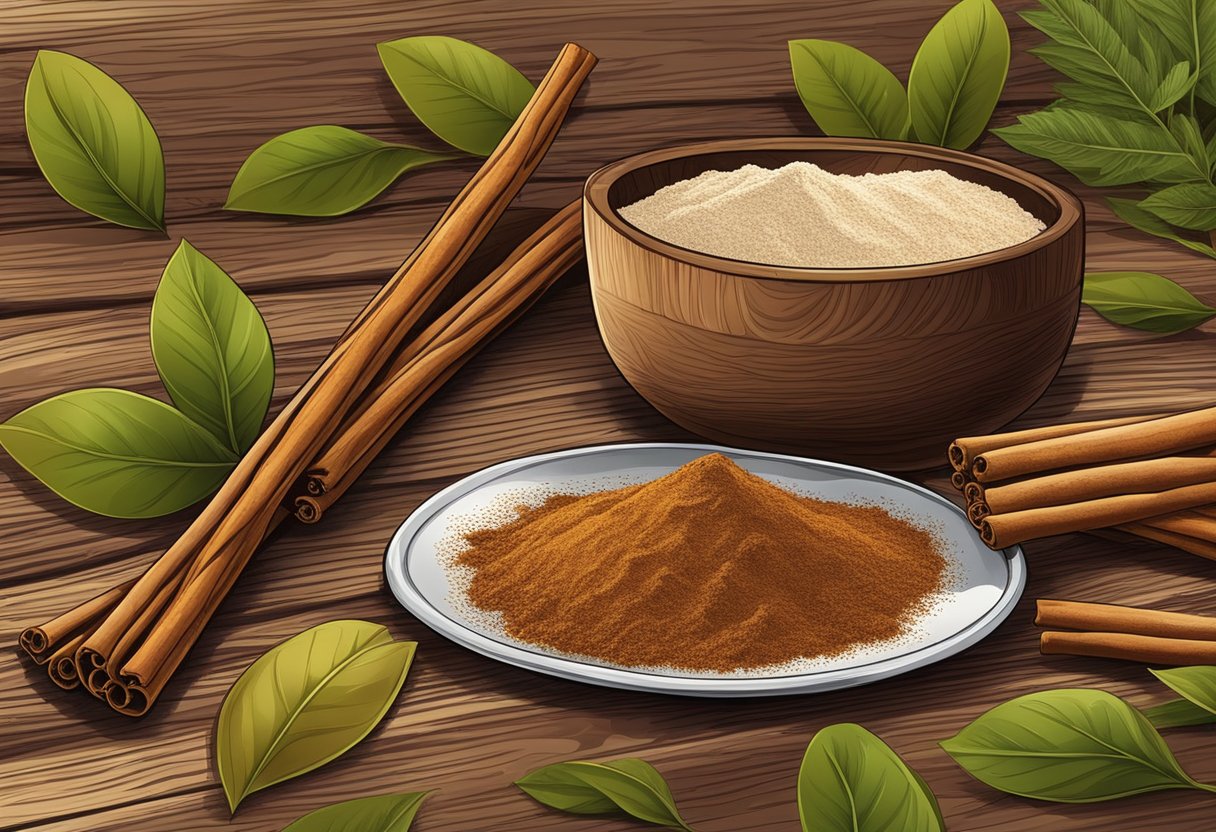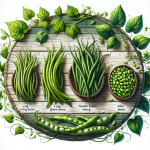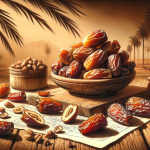Types Of Cinnamon
Cinnamon is one of the most popular spices in the world, known for its sweet, warm, and aromatic flavor. It is used in a variety of dishes, from sweet desserts to savory dishes, and is found in many different cultures around the globe. However, not all cinnamon is created equal, and there are several different types of cinnamon available on the market.
Cinnamon is derived from the inner bark of trees in the Cinnamomum family, which are native to Sri Lanka, India, and other parts of Asia. There are several different varieties of cinnamon, but the most commonly used types are Ceylon cinnamon and cassia cinnamon. Ceylon cinnamon, also known as true cinnamon, is native to Sri Lanka and is considered to be the more delicate and refined of the two types. Cassia cinnamon, on the other hand, is native to China and is known for its stronger, spicier flavor.
Key Takeaways:
- Cinnamon is a popular spice used in many different dishes around the world.
- There are several different types of cinnamon available, with the most commonly used being Ceylon cinnamon and cassia cinnamon.
- Cinnamon has a variety of culinary uses and is also believed to have several health benefits.
Cinnamon Origins and Varieties

Cinnamon is a spice that has been used for centuries for its aromatic and medicinal properties. It is obtained from the bark of several species of trees belonging to the genus Cinnamomum. The spice is widely used in cooking, baking and also in traditional medicine.
Ceylon Cinnamon
Ceylon cinnamon, also known as true cinnamon, is a type of cinnamon that is native to Sri Lanka. It is obtained from the inner bark of the Cinnamomum verum tree. This type of cinnamon has a delicate flavor and aroma and is less spicy than other varieties. Ceylon cinnamon is often used in sweet dishes and desserts, and it is also used in traditional medicine for its anti-inflammatory and antioxidant properties.
Cassia Cinnamon
Cassia cinnamon is a type of cinnamon that is native to China and is also grown in Indonesia and Vietnam. It is obtained from the bark of the Cinnamomum cassia tree. Cassia cinnamon has a stronger flavor and aroma than Ceylon cinnamon and is often used in savory dishes, such as curries and stews. It is also used in traditional medicine for its anti-inflammatory and antimicrobial properties.
Other Varieties
Apart from Ceylon and Cassia cinnamon, there are several other varieties of cinnamon that are used in different parts of the world. Some of these include:
- Cinnamomum burmannii: This type of cinnamon is native to Indonesia and is similar in flavor and aroma to Cassia cinnamon.
- Cinnamomum loureiroi: This type of cinnamon is native to Vietnam and has a sweet and spicy flavor.
- Other species of cinnamon: There are several other species of cinnamon, such as Cinnamomum zeylanicum and Cinnamomum aromaticum, that are used in different parts of the world.
In conclusion, cinnamon is a versatile spice that comes in different varieties, each with its unique flavor and aroma. Ceylon and Cassia cinnamon are the most commonly used varieties, but there are several other types of cinnamon that are used in different parts of the world. Whether you are using cinnamon in cooking or traditional medicine, it is important to choose the right type of cinnamon for the job.
Physical and Flavor Profiles
Color and Texture
Cinnamon has a distinct reddish-brown color and a rough texture. The color of cinnamon can vary depending on the type of cinnamon. For example, Ceylon cinnamon has a light brown hue, while Cassia cinnamon has a darker brown color. The texture of cinnamon is also dependent on the type of cinnamon, with Ceylon cinnamon being softer and more delicate than Cassia cinnamon.
Aroma and Taste
Cinnamon has a sweet, warm, and slightly spicy aroma that is instantly recognizable. Its taste is also sweet and spicy, with a slightly bitter aftertaste. The flavor of cinnamon can vary depending on the type of cinnamon, with Ceylon cinnamon being milder and more floral in taste, while Cassia cinnamon is spicier and has a higher volatile oil content that gives it a stronger flavor.
Overall, cinnamon is a versatile spice that adds warmth and depth to both sweet and savory dishes. Its physical and flavor profiles make it an essential ingredient in many cuisines around the world.
Culinary Uses and Pairings
Cinnamon is a versatile spice that can be used in a variety of sweet and savory dishes. Here are some culinary uses and pairings for cinnamon.
Baking and Desserts
Cinnamon is a staple ingredient in many baking recipes, including cinnamon rolls, snickerdoodles, and pumpkin pie. It adds a warm, sweet flavor to baked goods and pairs well with other fall flavors like apple and pumpkin. Cinnamon can also be used in chocolate desserts to add depth and complexity to the flavor.
In addition to baked goods, cinnamon can be used to make a variety of other desserts, such as rice pudding, churros, and cinnamon ice cream. It can also be used to flavor whipped cream, frosting, and glazes.
Savory Dishes and Beverages
Cinnamon can also be used in savory dishes and hot beverages. It pairs well with savory spices like cumin and coriander, and can be used to flavor meat dishes like lamb and chicken. Cinnamon is also a common ingredient in Middle Eastern and Indian cuisine, where it is used in curries and stews.
In addition to savory dishes, cinnamon can be used to flavor hot beverages like coffee, tea, and mulled wine. It adds a warm, spicy flavor to these drinks and pairs well with other winter spices like nutmeg and cloves.
Overall, cinnamon is a versatile spice that can be used in a variety of dishes. Whether you’re baking a sweet treat or making a savory stew, cinnamon is a great way to add flavor and depth to your cooking.
Cinnamon in Health and Medicine
Cinnamon is a popular spice that has been used for centuries in traditional medicine. It is known for its sweet and warm flavor, as well as its potential health benefits. Here are some of the ways cinnamon may be beneficial for health and medicine:
Diabetes
Cinnamon has been shown to have anti-diabetic effects. It may help lower blood sugar levels by increasing insulin sensitivity, which can be beneficial for people with diabetes. However, more research is needed to determine the optimal dose and duration of cinnamon supplementation for diabetes management.
Coumarin
Cinnamon contains a compound called coumarin, which can be toxic in high doses. Cassia cinnamon, which is the most common type of cinnamon sold in North America, contains higher levels of coumarin than Ceylon cinnamon. Therefore, it is recommended to consume cinnamon in moderation and to opt for Ceylon cinnamon if possible.
Cinnamaldehyde
Cinnamaldehyde is a compound found in cinnamon that is responsible for its characteristic flavor and aroma. It may also have anti-inflammatory and antioxidant properties, which can be beneficial for overall health. However, more research is needed to fully understand the potential health benefits of cinnamaldehyde.
In conclusion, cinnamon has been shown to have potential health benefits, particularly for diabetes management. However, it is important to consume cinnamon in moderation and to opt for Ceylon cinnamon if possible to avoid excessive coumarin intake. Further research is needed to fully understand the potential health benefits of cinnamon and its compounds.
Purchasing and Storage
Selecting Quality Cinnamon
When purchasing cinnamon, it is important to select high-quality products to ensure that you get the best flavor and aroma. Cinnamon can be purchased in various forms such as powder, sticks, and whole cinnamon. If you prefer the convenience of ground cinnamon, make sure to purchase it in small quantities as it can lose its flavor quickly.
If you prefer cinnamon sticks, look for sticks that are tightly rolled and have a uniform color. The sticks should also be free from cracks and splits. For the best flavor and aroma, consider purchasing cinnamon from a reputable spice shop that specializes in high-quality spices.
Preserving Freshness
To preserve the freshness of cinnamon, it is important to store it properly. Cinnamon sticks can be stored in an airtight container in a cool, dry place for up to one year. Ground cinnamon, on the other hand, should be used within six months of the best-by date to ensure maximum freshness.
If you purchase cinnamon in bulk, consider storing it in the freezer to extend its shelf life. Before using frozen cinnamon, allow it to come to room temperature to prevent moisture from forming on the spice.
In summary, purchasing high-quality cinnamon and storing it properly is crucial to ensure that you get the best flavor and aroma. Whether you prefer powder or sticks, make sure to purchase from a reputable source and store it in a cool, dry place or freezer to preserve its freshness.






